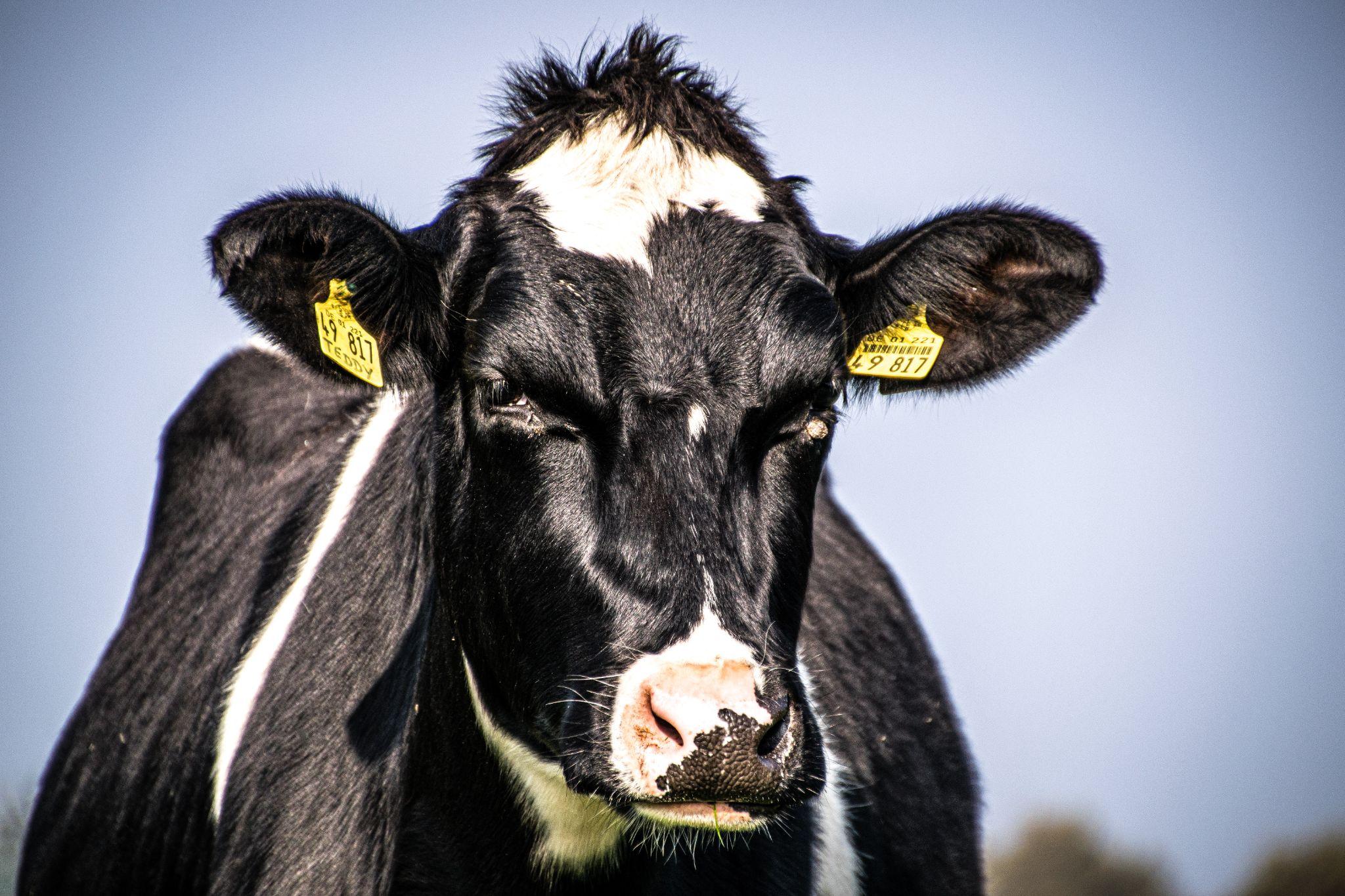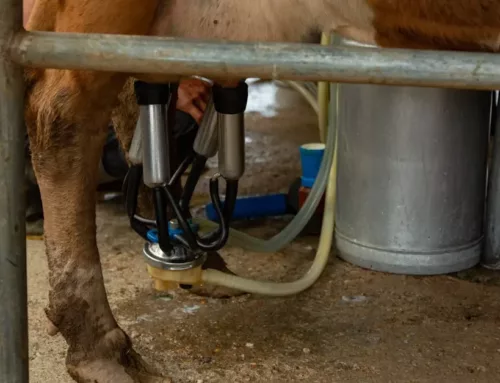Data-Driven Cattle Breeding: A New Frontier in Livestock Genetics

A tagged cow looking directly ahead.
With the growing demand for livestock products worldwide, cattle breeding has become crucial to the continuation of livestock farming. However, traditional methods of selective breeding don’t bear fruit because most of them are not precise and are too time-consuming, making breeding efforts difficult. Since livestock production will depend on environmental and socio-economic factors, we need to shift our focus to scientific and technological innovations in the field to keep the practice alive and growing.
Scientific and technological innovations have given rise to the advent of data-driven cattle breeding techniques like genomic selection and rapid DNA typing. These techniques have revolutionized the field of livestock genetics and have enabled breeders to make informed breeding decisions.
This article explores data-driven cattle breeding’s potential to transform the livestock industry. We will also briefly look at some of the latest tools and techniques in the field.
The Importance of Data-Driven Cattle Breeding
The growing population, rapid urbanization, and global income growth have helped increase the demand for livestock products. While this might benefit ranchers, they are constrained by several limitations that hinder their efforts to meet the growing demand. Ranchers are also finding it difficult to find natural resources for cattle raising due to climate change, socio-cultural changes, and the urbanization of several developing countries. This impacts their ability to maintain a suitable ecosystem conducive to cattle breeding.
These changing factors have resulted in the emergence of Precision Livestock Farming (PLF) and data-driven breeding. Data-driven methodologies were developed to help ranchers understand all the necessary internal and external modifiers to make informed breeding decisions. Scientific innovations with real-time genomic selection and high-throughput genotyping technologies have enabled breeders to quickly and efficiently collect information about genetic diversity, which is the key to successful cattle breeding. You can learn more about genomic selection and rapid DNA typing through our previous article.
The Latest Innovations in the Field of Data-Driven Cattle Breeding
The rapid growth in machine learning, AI, and 3D technology has had a massive impact on livestock farming and cattle breeding. Let’s look at some of the latest innovations in the field below:
New Phenotyping Tools
The introduction of phenomics has helped researchers and ranchers to identify and track how different genomes interact with different biochemical traits. Phenotyping has helped genetic data analysts learn how genome sequences impact the breeding ability of different cattle variants. The development of smart electronic sensors has helped data scientists collect detailed information and measurements. By comprehensively analyzing this new data set with traditional phenotyping, breeders should gain real-time insights into animal behavior and performance.
Digital Twinning
Digital technology like machine learning and artificial intelligence has enormously impacted the field of data-driven cattle breeding. This has resulted in the development of the digital twin that acts as a virtual representation of the cattle. With the help of this innovation, data scientists can simulate various scenarios and test the impact of different breeding decisions.
A digital twin can significantly reduce the time and cost involved in breeding programs by allowing ranchers to test different breeding strategies virtually before implementing them in the real world. Additionally, twinning can enable ranchers to monitor an individual animal’s health and behavior better. With a large data set, the twin can be analyzed using machine learning algorithms to identify potential health issues before they become serious problems.
3D Printing

A close-up of a gene sequence.
3D printing is one of the latest innovations to revolutionize the field of agriculture. Since tools like 3D-printed connectors help plants adapt to any environment, scientists are also looking to expand their application to cattle breeding. In cattle breeding, 3D printing technology can be used to create physical models of animal organs. Currently, the technology is used to print reproductive tracts and cervixes to help agricultural students learn and practice artificial insemination.
An extension of this technology could be used to reproduce the organs of real-life cattle to understand the complex reproductive processes involved in cattle breeding. With 3D printing, breeders can create customized breeding plans for each animal, improving the efficiency of breeding programs. However, the low availability of 3D printing technology limits the ability to generate a large amount of data.
The Challenges and Future of Data-Driven Cattle Breeding
While data-driven cattle breeding has grown rapidly in the last decade, several challenges limit it from reaching more ranchers. One major challenge is that many small-scale ranchers may need more resources or knowledge to implement these technologies effectively. Another challenge is the lack of standardization; most data collected through genetic analytics could be limited to a specific farm or region. This makes comparing data across different areas difficult and limits the ability to make meaningful breeding decisions. Unless ranchers partner with data analysts with large genome data or on-field experience, data-driven cattle breeding will not yield the results it could that would then help improve breeding programs overall.
How Can Agboost Help?
Agric-Bioformatics (AgBoost) was started to empower ranchers and agricultural companies to analyze complex data & get actionable insights. We offer a comprehensive data-driven solution that combines agronomic data analysis, genomics, and automation. Our expertise in the field of genetic analytics has helped us provide data-based breeding suggestions to help ranchers match the right bull for breeding.
Our solutions are specifically designed to suit the needs of small-scale ranchers who need more resources to implement modern cattle breeding programs. If you’re a farmer in Oklahoma looking to improve your livestock breeding using data-driven genetic analytics, our affordable services should be the perfect fit.
References:
https://royalsocietypublishing.org/doi/10.1098/rstb.2010.0134#d1e1407
https://academic.oup.com/jas/article-abstract/98/Supplement_3/147/6010711
https://www.mdpi.com/1424-8220/22/19/7118#:~:text=This%20research%20is,of%20sample%20data.


